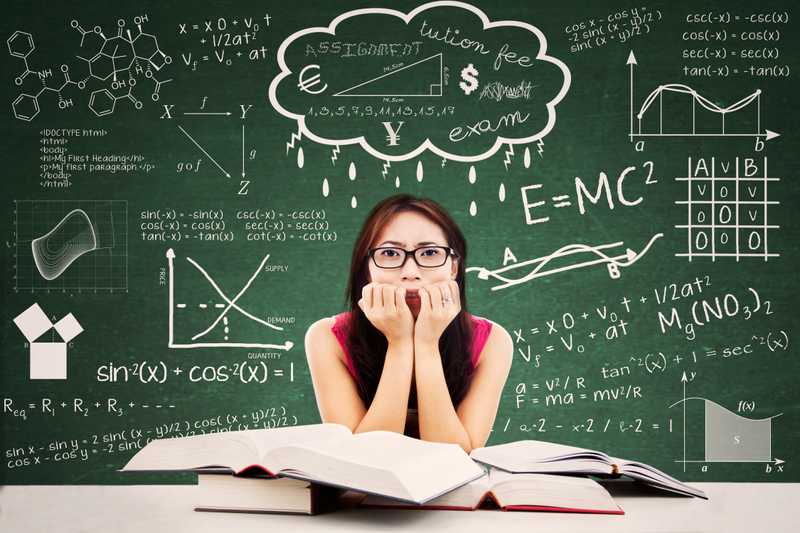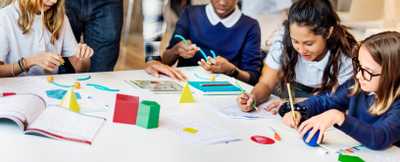Unfinished learning is a hot topic in 2021.
This phrase refers to concepts students have not yet mastered that will be key to grasping future ideas. At the risk of oversimplifying, the idea is that learning is basically a set of building blocks that students need to access in order to engage with and comprehend new material. Rather than implying a negative framing with terms like “weakness” or “gap” when referring to blocks yet-to-be-learned, “unfinished learning” suggests that with more work, students can and will achieve mastery.
Over the past year and a half, COVID-19 has significantly heightened the importance of addressing unfinished learning. The task of meeting the needs of all students tends to be daunting in a “normal” environment, but introduce an unforeseen pandemic and what do you get? The range of abilities represented in a single classroom has grown even wider and schools, teachers, and students need more resources than ever before to address these needs.
Now, as stability gradually returns, the question becomes: how can we help address unfinished learning and provide support systems to accelerate student learning?
Addressing Unfinished Learning
The traditional method to addressing unfinished learning is known as remediation. In order to help students catch up on missed work, educators would back-track and review entire lessons and units of content.
By all accounts this seems like a logical solution! Why wouldn’t you simply repeat lessons until a student understood them?
The problem is, remediation actively delays the catch-up process. While students are in remediation, attempting to re-learn old content, their peers are advancing.
Remediation sets students up for a long journey of always being behind. The process fails to consider a path that pushes students to catch up to expected learning levels.
Learning Acceleration: An Alternative Path
However, learning acceleration is the concept that educators can catch students up by providing them with heavy doses of additional, forward-looking learning. While remediation focuses on repeating old content, learning acceleration flips the focus to intensive preparation for upcoming content. Instead of exhaustively reviewing content from prior years, teachers are encouraged to provide just-in-time support and review prerequisite skills and concepts as these become relevant to the grade-level standards.
“This is in some ways a field-flipping idea … It feels counterintuitive because we are saying to teachers, ‘The thing we taught you to do isn’t working.’”
- TNTP Vice President, Bailey Cato Czupryk
But does it work?
The data shows that students who completed a structured learning acceleration program caught up on ~25% more coursework in the same timeframe than their peers who went through remediation.
Implementing learning acceleration also benefits students beyond classroom work. Remediation’s backward-looking focus may convey a sense of futility in learning, which leads to a lack of engagement and a loss of confidence. Conversely, learning acceleration promotes forward movement and shows students that they can stay on track with their peers, which fuels self-confidence and further engagement.
In other words, remediation sets the stage for a self-sustaining cycle of decline in academic performance, whereas learning acceleration flips the story and sets students up for a self-sustaining cycle of academic improvement.
The Additional Value of Learning Acceleration in Resolving Issues of Student Equity
Student inequity based on racial, ethnic and socioeconomic factors is a known issue in education. Students of color or those from low-income backgrounds face significant disadvantages even in the most level of playing fields. These disadvantages have only been exacerbated by the interruption to schooling caused by COVID-19.
Learning acceleration is a potential solution to closing this gap. Research shows that “classes that experienced learning acceleration in schools with mostly students of color saw a much smaller increase in their struggle rate compared to remediated classrooms (only one-tenth as large) and completed 49% more grade-level lessons.”
Learning acceleration is uniquely suited to address the struggles that students from disadvantaged backgrounds have historically faced. Extra time, focus, and positive attention can help these students recover - and thrive.
Accelerate Learning with Yup
Yup is well situated to support structured accelerated learning programs. K-12 students are provided with access to student-led, one-on-one High Dosage Tutoring (HDT) sessions. Yup offers unlimited, 24/7, just-in-time support from well-vetted and highly trained tutors. Instructional support draws from NCTM best practices to help drive student learning. Tutors are taught to meet the students where they are at and to use supportive language that encourages a growth mindset. This fosters both the support and sense of confidence necessary to recover unfinished learning.
Are you an Administrator or Teacher? Find out how Yup can support you and your students. Contact partnerships@yup.com to learn more about bringing Yup to your school or district.






